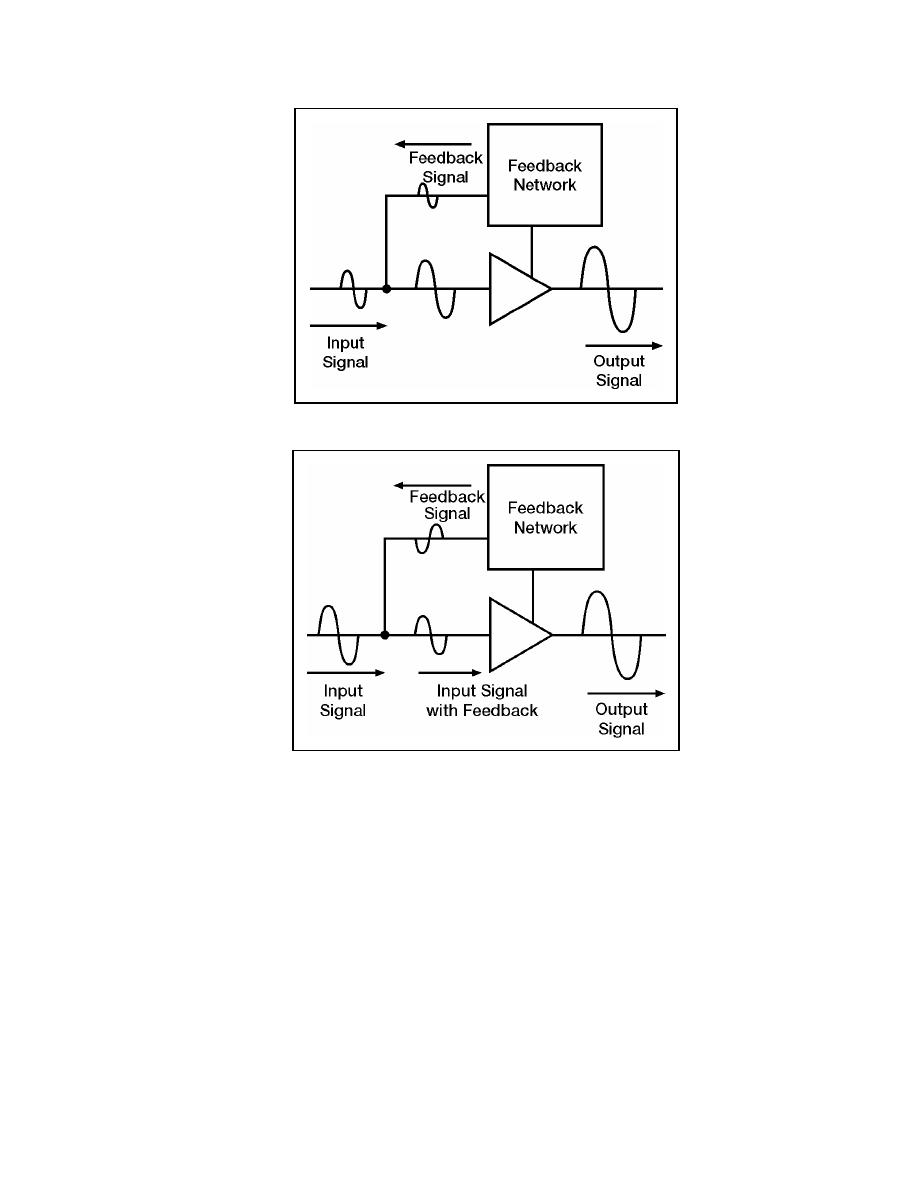
____________________________________________________________________________ Amplifiers
Figure 5-14. Positive Feedback in an Amplifier
Figure 5-15. Negative Feedback in an Amplifier
5-65. Feedback is also used to get the ideal input signal. Normally, the maximum output
signal is desired from an amplifier. The amount of the output signal from an amplifier is
dependent on the amount of the input signal. However, if the input signal is too large, the
amplifying device will be saturated and/or cut off during part of the input signal. This
causes the output signal to be distorted and reduces the fidelity of the amplifier. Amplifiers
must provide the proper balance of gain and fidelity.
5-66. Figure 5-16 shows the way in which feedback can be used to provide the
maximum output signal without a loss in fidelity. In view (A), an amplifier has good
fidelity, but less gain than it could have. By adding some positive feedback (view (B)), the
gain of the stage is increased. In view (C), an amplifier has so much gain and such a large
input signal that the output signal is distorted. This distortion is caused by the amplifying
device becoming saturated and cutoff. By adding a negative feedback system (view (D)),
the gain of the stage is decreased and the fidelity of the output signal improved.
23 June 2005
TC 9-62
5-17


 Previous Page
Previous Page
